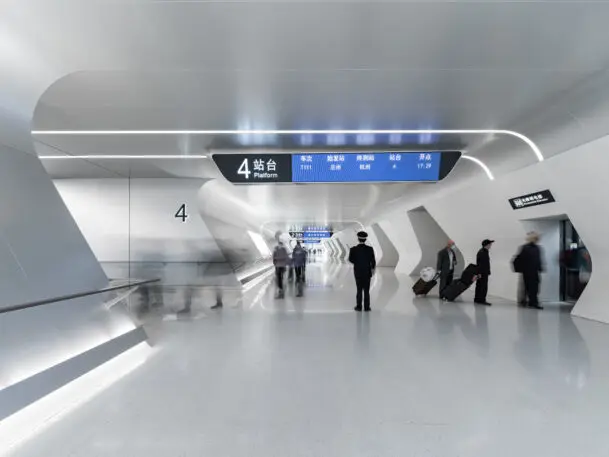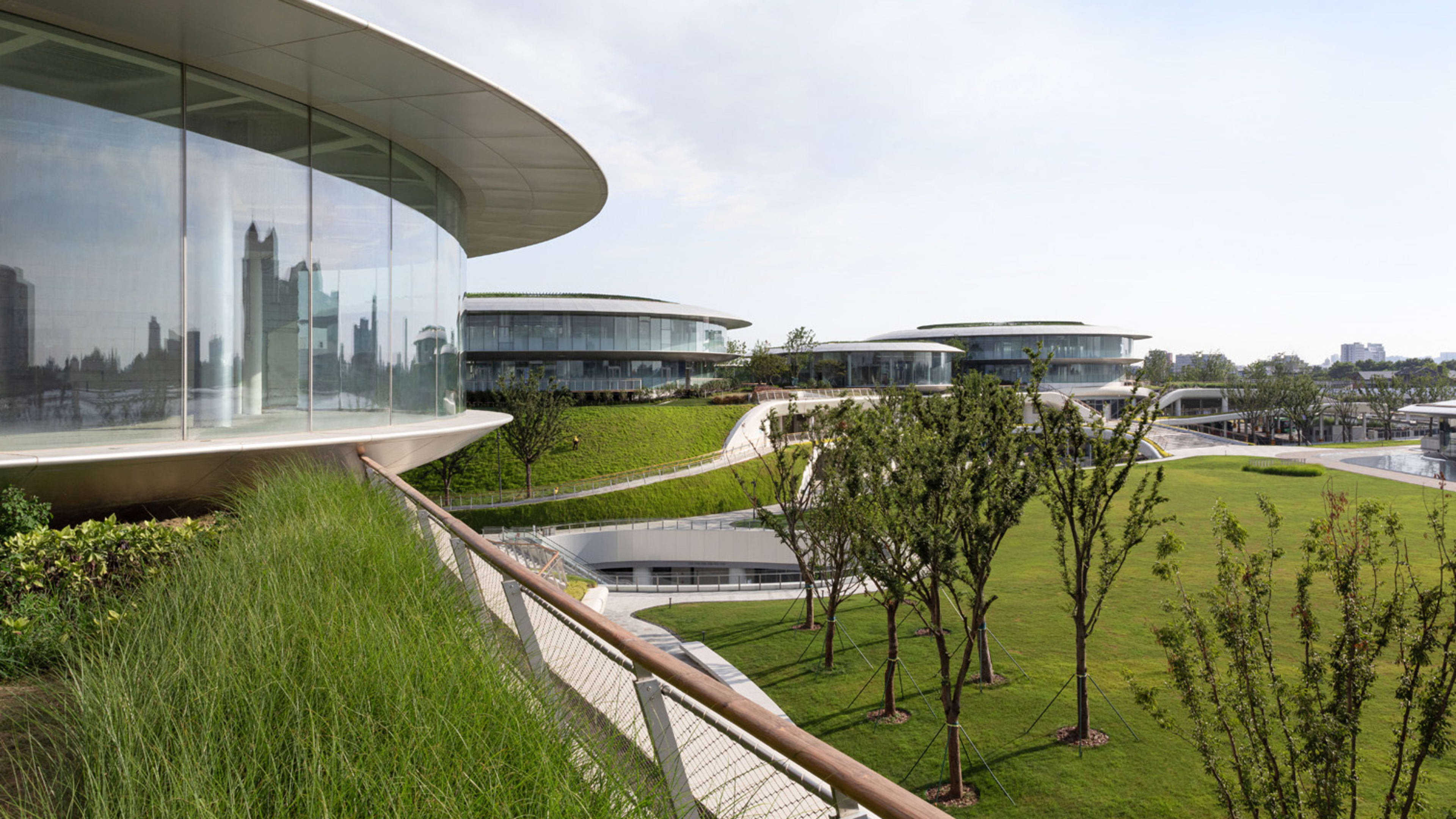The gleaming and approachable new central train station in the eastern Chinese city of Jiaxing was born out of a complaint. Over the past two decades, as high-speed rail lines have criss-crossed the country, the train stations that have been built for them have followed a similar model: gargantuan building surrounded by seas of bus parking and roads, and a main entry fronting a massive and barren public plaza.

Isolated from the city and often difficult to access, these train stations had become a thorn in the side of architect Ma Yansong, the city-hopping founder of MAD Architects, a firm with projects all across China and, increasingly, the U.S. When he’s not in Los Angeles working on the forthcoming Lucas Museum of Narrative Art, Ma is often riding high-speed trains between project cities throughout China. The size of China’s train stations became a perplexing obsession. “I was wondering from the beginning why they have to be so big, so difficult for people to approach,” he says. “They want to show power. They use the architecture, the scale, and the space to show grandness [but] they’re not functional. They don’t really work for people.”

So, when his firm got invited to redesign the central train station in Jiaxing, a city of 1.4 million people near Shanghai, Ma saw a chance to design a radically different type of building, one that cared less about the image it was presenting and more about the experience of people using it to simply catch a train.

The station, as reimagined by MAD Architects, is now a unique urban space, with two easily accessible terminals, elegant and light-drenched waiting halls, a series of interconnected commercial and hotel buildings, and two large public parks that connect the site fluidly to the city around it. Parking and road access to the station has been tucked underground—under park space, in fact—countering the isolated and dizzying nature of other big city train stations.

While Ma’s firm is known for its futuristic cultural projects, like the curvaceous Harbin Cultural Center and the volcano-topped Quzhou Sports Park, his intent in Jiaxing was to create a building that dialed back the overt grandeur and forced symbolism seen in other rail projects throughout China. “It’s also symbolic when you do a normal building in this context,” Ma says. “The building is the most low-key train station in China.”

That’s not to say it isn’t beautiful. With long and subtly curving cap roofs, the station lays low and horizontal, pushing its main waiting halls below ground level. Massive skylights and a ring of big windows overhead pour sunlight over what are technically underground spaces. Just outside one entrance, MAD Architects has recreated the city’s original train station building, originally constructed in 1907, and turned it into a museum on the city’s history. Even as a recreation, it’s a rare piece of historic architecture there.

Ma says it was also an excuse to keep the new train station from towering too high, and sitting completely out of scale with the historic structure. Other buildings in the complex accommodate offices, hotels, and shops, and Ma refers to the overall project as a transit-oriented development. Not unlike the massive-scale train stations in other big cities, it’s designed to keep the trains moving while also spurring commerce.

The biggest gesture of the project is outside the bounds of the station itself, and a bold rejection of the predominant model of train station design in China. “The old train stations all have a big plaza in front of them and nobody goes there. Now we’re taking that plaza space and transforming it into a green space,” Ma says. The park, which expands on and opens a formerly gated park nearby, adds hundreds of trees and several small ponds to the station’s grounds, offering a natural getaway for travelers but also a public space that can be used by Jiaxing residents with no other need for visiting the train station.
“We wanted to make a void for people to go to without purpose. They can go shopping or take a train or work, but that’s not necessary,” Ma says. “The real goal is it becomes urban, so it’s not a single purpose space.”
Recognize your brand’s excellence by applying to this year’s Brands That Matter Awards before the final deadline, June 7.
Sign up for Brands That Matter notifications here.
